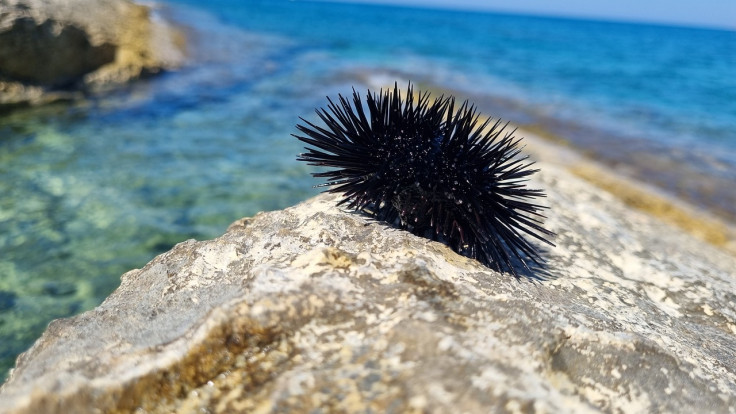Case Closed: Researchers Identify What's Been Killing Caribbean Sea Urchins
KEY POINTS
- A sea urchin mass mortality was observed starting in January 2022
- Researchers finally identified the culprit behind the die-off: a known fish parasite
- Sea urchins actually play important roles in their ecosystems
Loads of sea urchins in the Caribbean Sea have been lost to a massive die-off. Now, researchers finally uncovered the mysterious urchin killer.
The recent deaths were first identified in St. Thomas in the U.S. Virgin Islands in January 2022, according to Cornell University. Within a few short months, the mortalities were identified in other places as well, including Jamaica, Florida and Curaçao.
In just that short span of time, the culprit has caused a massive 85 to 95% drop in sea urchins' numbers in the affected areas compared to their pre-mortality numbers, the university noted.
"The sea urchin Diadema antillarum, virtually extirpated in the Caribbean in the early 1980s by an unknown cause, recently experienced another mass mortality beginning in January 2022," the researchers wrote in their paper, which was published in Science Advances on Wednesday.
The 2022 mass mortality event was reminiscent of the one in the 1980s, as per the U.S. Geological Survey (USGS). And with the new die-off, researchers have been racing to determine the killer.
This is exactly what the researchers sought to find in their new study. To do this, they collected samples from 23 sites, both affected and unaffected, so they could compare them.
Researchers first tested the samples for viruses and bacteria but failed to identify a potential suspect. They were "a bit at a dead end," marine ecologist and study lead author Ian Hewson of Cornell University said in the university release.
But further investigation focusing on eukaryotic microorganisms such as fungi and ciliates finally uncovered the identity of the killer: Philaster apodigitiformis.
An international team of scientists has discovered that a parasite is behind a severe die-off of long-spined sea urchins in the Caribbean, which has devastated coral reefs and surrounding marine ecosystems. @CornellCALS @KrishnaWriter https://t.co/dgxWGrUVxI
— Cornell Chronicle (@CornellNews) April 19, 2023
P. apodigitiformis is a pathogen that has been known as a parasite in fish, but this is the first time that it has been linked to mass deaths in invertebrates, the university noted.
It was "very, very abundant," Hewson said.
But it was not present in the samples collected from the control sites. And when they performed an experiment by introducing the pathogen to healthy specimens in the aquarium, the urchins indeed ended up dying and showing signs consistent with the mass mortality event. This essentially confirms the pathogen as the culprit.
"Almost never are we able in a wildlife setting, at least in marine habitats, to prove that a microorganism is actually responsible for disease," Hewson said in the university release.
This was a very quick identification of the killer, taking only four months. Such an undertaking typically takes years, according to the University of South Florida.
They surmised that the pathogen grew under the conditions at affected sites in spring 2022 and then "rapidly" spread to other sites as well until the conditions changed and its growth began to slow down.
"(W)e suggest that the Philaster-like ciliate represents a highly prolific pathogen capable of invading tissues of grossly normal urchins and causing mass morbidity and mortality under conditions that are not yet well understood," the researchers wrote.
Although beachgoers may find sea urchins to only be the spiky animals that they need to avoid, these creatures actually play an important role in their environments.
Sea urchins feed on the algae that compete with coral reefs. If the algae are left to grow, they could actually end up blanketing and killing coral reefs. In the 1980s, for instance, the urchin mass mortality contributed to the decline in the coral reef ecosystem, the USGS noted.
The D. antillarum, according to the agency, is an "ecologically important species in Caribbean coral reef habitats."
So far, the researchers still haven't figured out how to treat the condition, nor if the pathogen can also affect other sea urchin species apart from the D. antillarum. It also remains unclear if it was also the culprit for the die-off back in the 1980s.
However, actually knowing its identity is a major step toward understanding the phenomenon and helping to maintain the health of sea urchins.

© Copyright IBTimes 2024. All rights reserved.






















